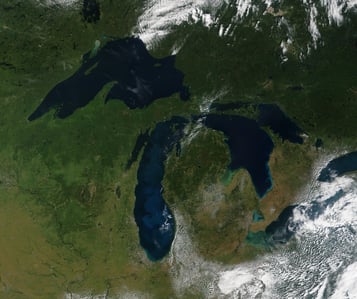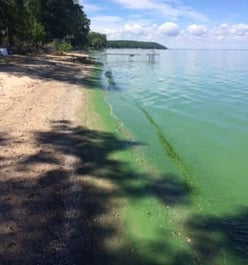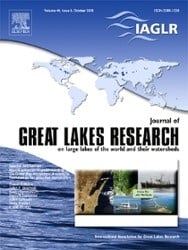

Green Bay sits at the mouth of Lake Michigan, one of the Laurentian Great Lakes, which collectively represent 20% of the world’s remaining surface freshwater. How much do you know about the magnificent and abundant waters of Green Bay? The journey to Understanding Our Water is complex, exciting, and important. Before you head out to enjoy Wisconsin’s waters, being armed with knowledge of what’s happening in that water, can help keep you, and your family, safe.
As the world’s largest freshwater estuary, Green Bay acts like a sponge and captures many nutrients that runoff into the Bay. Runoff is water that travels over land and can carry sediment and nutrients to a waterbody that were intended to stay on land. These excess nutrients can fuel the growth of cyanobacterial harmful algal blooms, sometimes known as blue green algae. Harmful Algal Blooms (HABs) have been detected in Green Bay, as well as in many bodies of water in the U.S., and internationally, and be harmful to living creatures, particularly small children and pets, who tend to ingest the water.
When in doubt, stay out! Some useful resources to help you understand our water are listed here.
Click here to see how runoff events can bring nutrients and sediment from land to the Fox River and into lower Green Bay.
Image Caption: Rain events can transport sediment and nutrients from the land and deposit them in the water.
What is a freshwater estuary? Watch this video to learn more.
Image Caption: The Fox River flows north into the bay of Green Bay, creating the world's largest freshwater estuary. Photo courtesy of Steve Seilo.

Ongoing study indicates cyanobacteria produce cyanotoxins near the lower Green Bay shoreline. See the white paper here.
Image Caption: Algal blooms on the shoreline. Thick green scum is a common bloom attribute.

Want to learn more about what’s happening with cyanobacteria, as well as the “dead zone,” or hypoxia, in Green Bay waters? Dive into these new scientific studies by NEW Water staff scientists Erin Houghton and Sarah Bartlett.
For more information on safely recreating in waters with cyanotoxins, please visit: